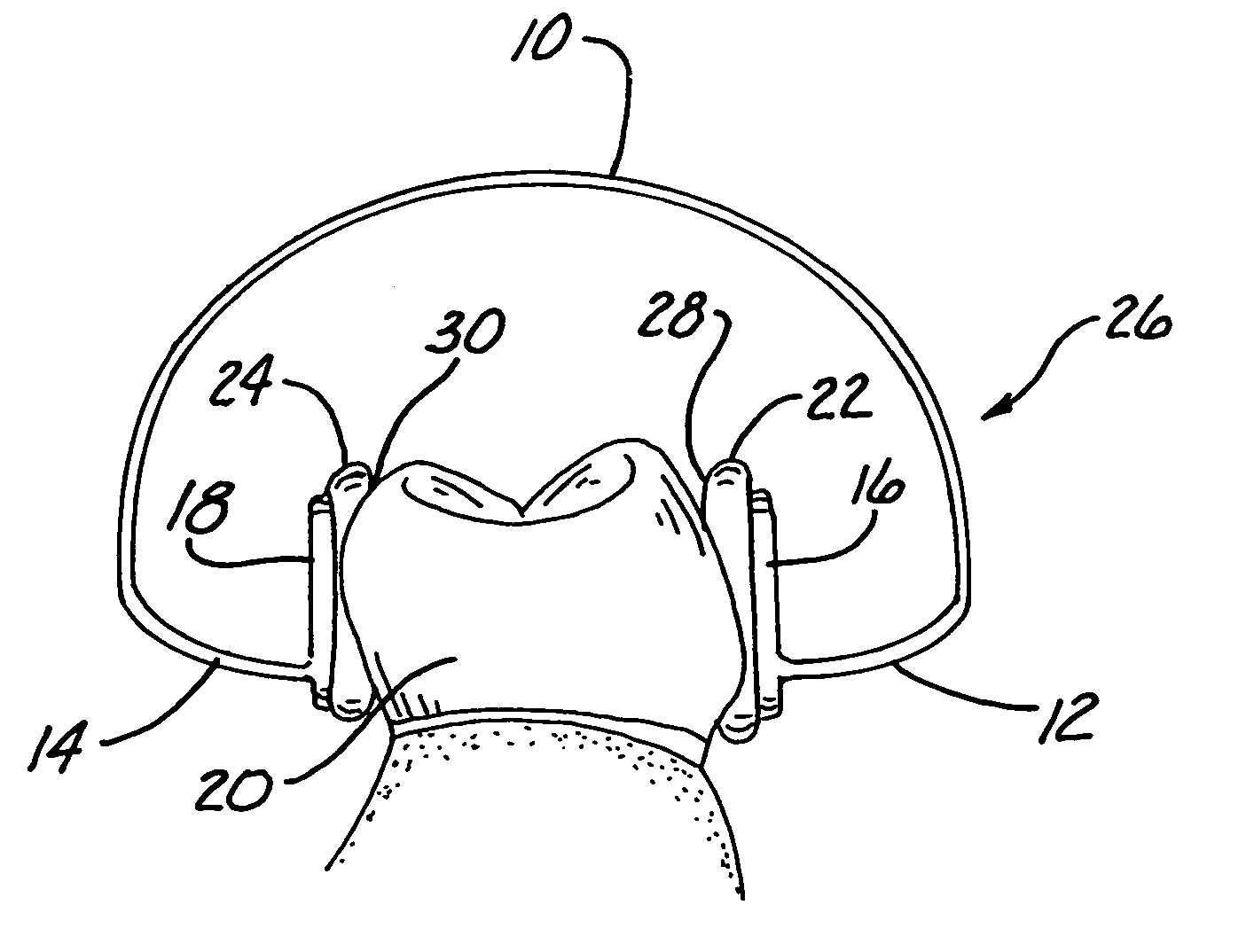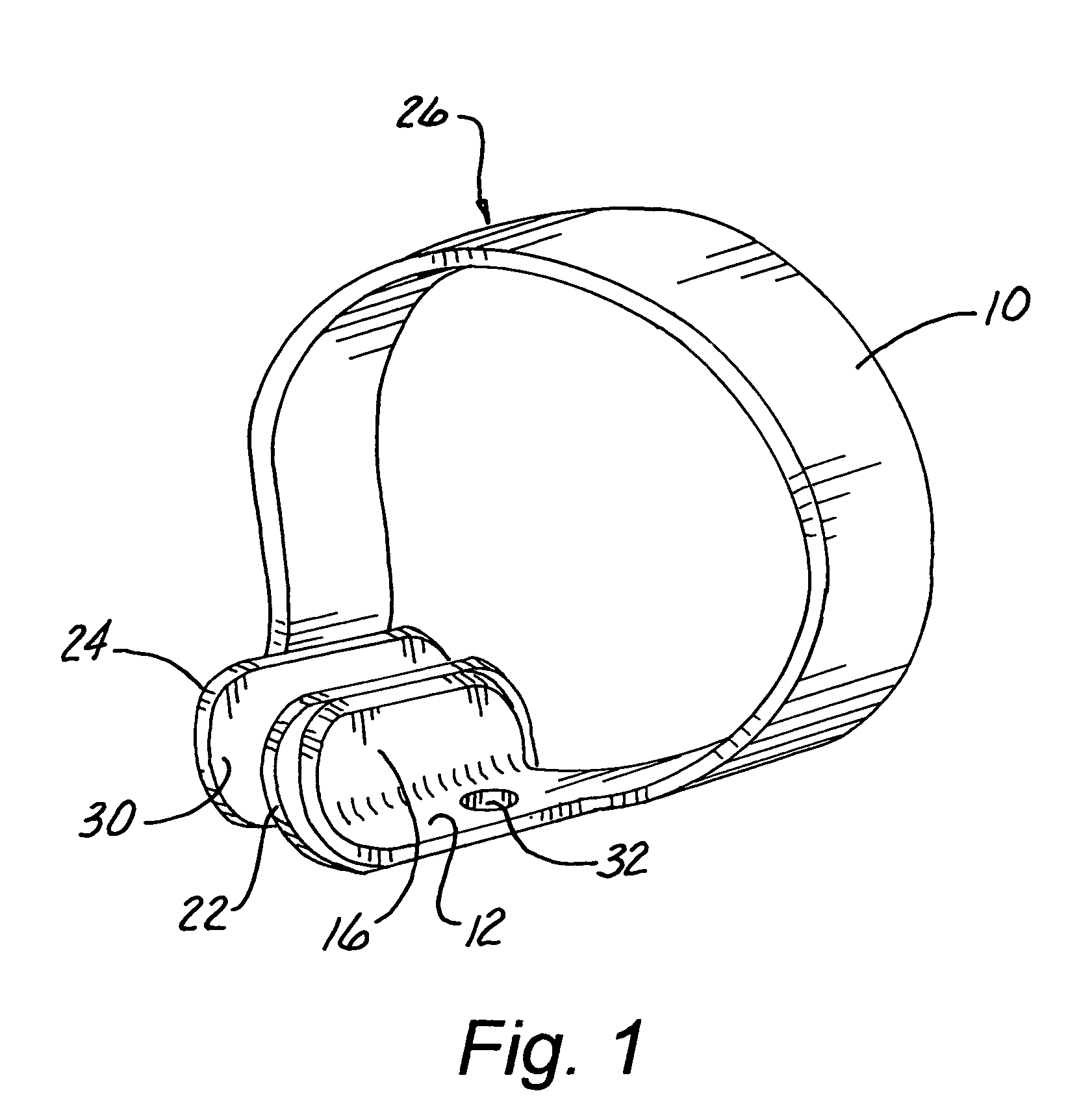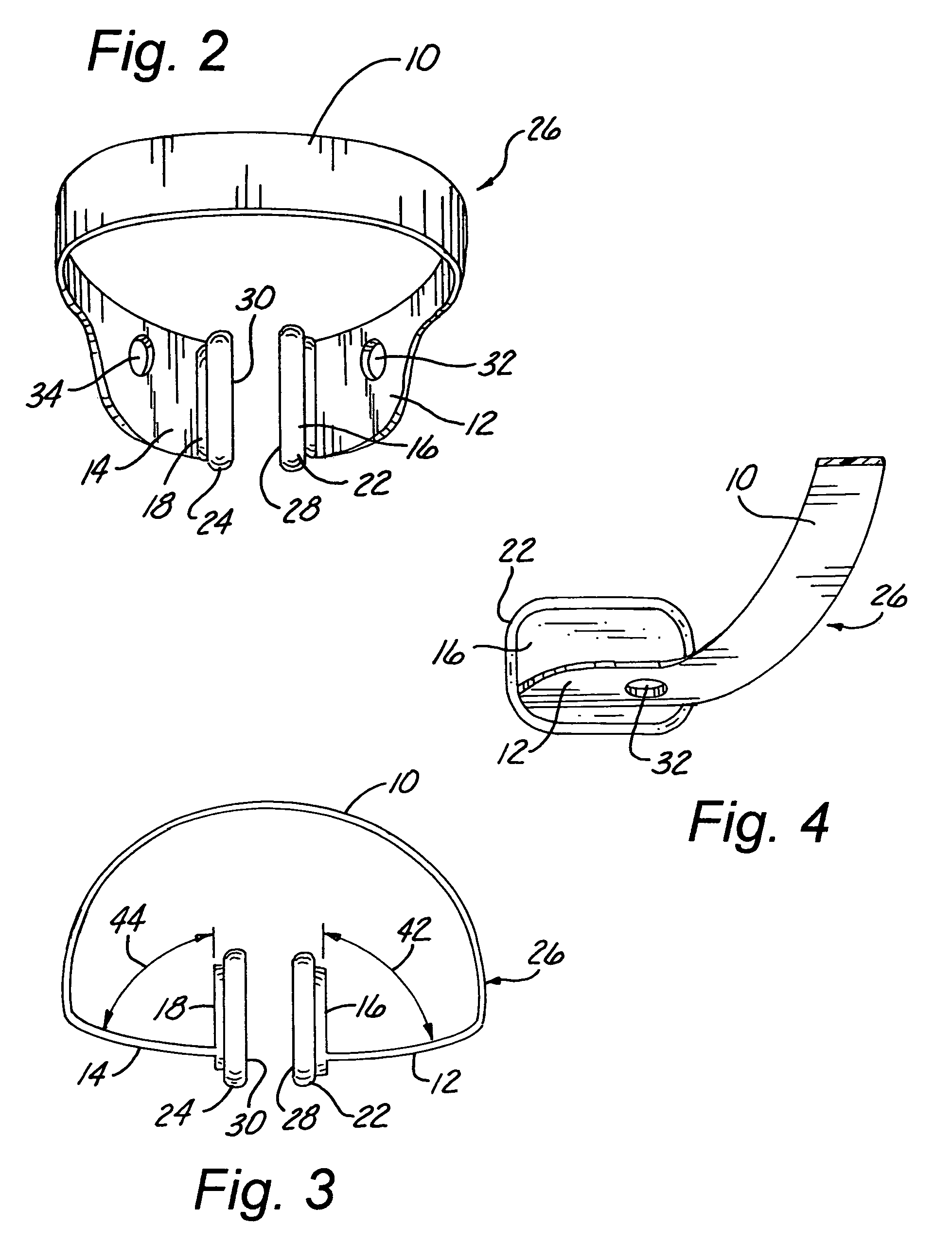Rubber dam clamps retained by adhesion and improved frictional forces
a technology of rubber dam and frictional force, which is applied in the field of rubber dam clamps, can solve the problems of not always stable on the tooth, rubber dam failure during application, frustrating and time-consuming task of stopping the procedure, etc., and achieve the effect of improving frictional retention and frictional retention
- Summary
- Abstract
- Description
- Claims
- Application Information
AI Technical Summary
Benefits of technology
Problems solved by technology
Method used
Image
Examples
Embodiment Construction
[0026]The invention consists of improved rubber dam clamps designed with broad-base flexible polymeric bonding pads, referred to as elastomeric pads, which increase the surface area of contact with a tooth, thereby increasing retentive frictional forces and providing a surface for the application of adhesives in order to be adhesively attached to a tooth during a dental procedure. Improved frictional contact and adhesive bonding result in a retaining clamp which resists dislodgement, cervical displacement, and torsional rotation, thus making the clamp far more stable and comfortable for a patient during application and far more reliable for the clincian during treatment procedures. The improvements which are a part of this disclosure are applicable to all varieties of rubber dam clamps, including conventional isolation rubber dam clamps and also general field isolation rubber dam clamps. While this disclosure focuses primarily on the clamps sharing the retentive mechanisms of improv...
PUM
 Login to View More
Login to View More Abstract
Description
Claims
Application Information
 Login to View More
Login to View More - R&D
- Intellectual Property
- Life Sciences
- Materials
- Tech Scout
- Unparalleled Data Quality
- Higher Quality Content
- 60% Fewer Hallucinations
Browse by: Latest US Patents, China's latest patents, Technical Efficacy Thesaurus, Application Domain, Technology Topic, Popular Technical Reports.
© 2025 PatSnap. All rights reserved.Legal|Privacy policy|Modern Slavery Act Transparency Statement|Sitemap|About US| Contact US: help@patsnap.com



